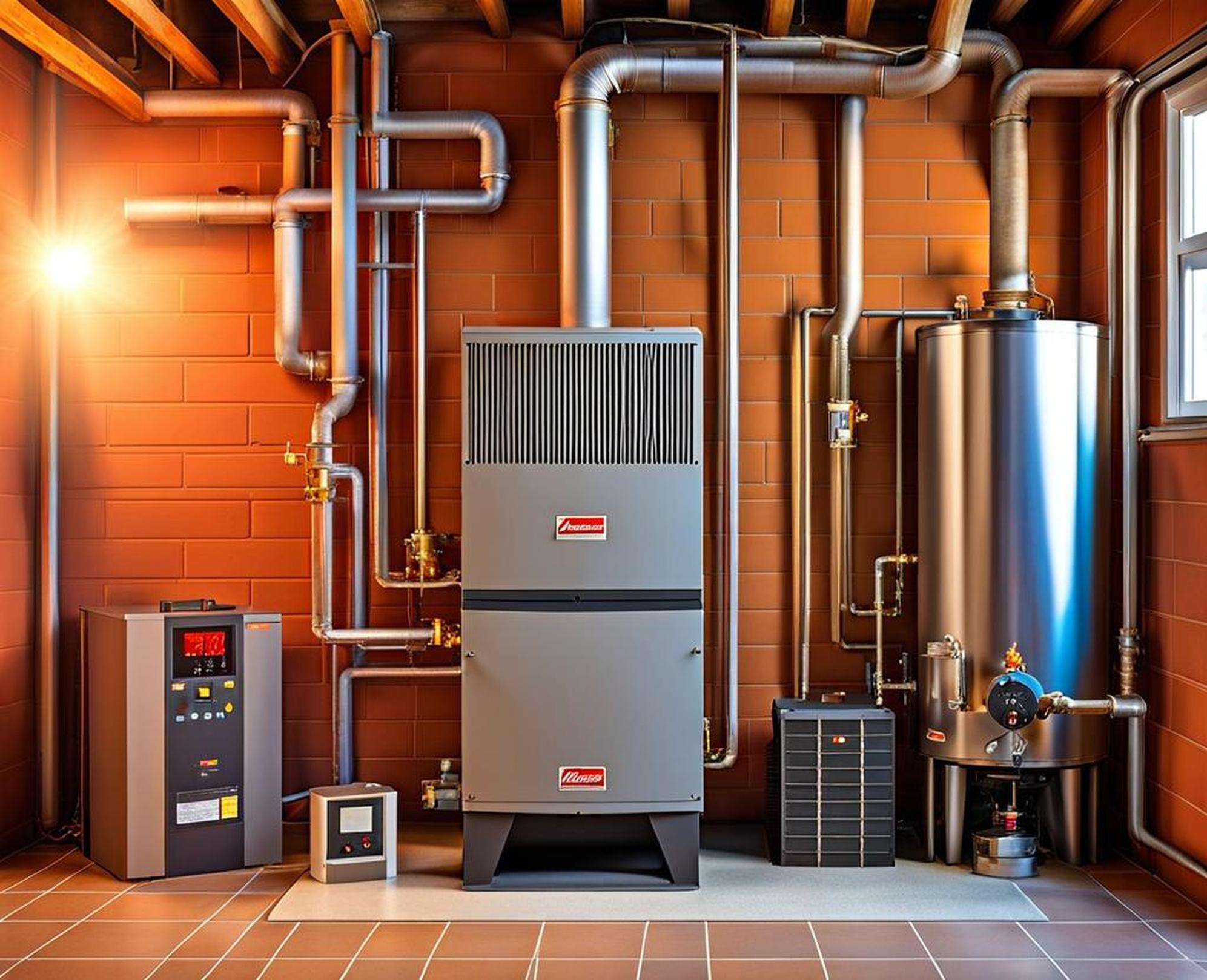It’s a cold winter morning and you wake up shivering under the covers. You get up to turn up the thermostat only to find that no warm air is blowing out of the vents. Uh oh, your furnace isn’t working. Now you’re facing the prospect of calling an expensive HVAC technician or trying to fix it yourself. But how can you determine the problem if you don’t know the basic components of your furnace?
Knowing the key parts of your furnace and how they work together can help you troubleshoot issues before they become big problems. Being aware of common maintenance can also keep your system running smoothly.
How Does a Furnace Work?
First, it helps to understand the basic stages of furnace operation:
- The thermostat signals the furnace to turn on when heating is needed.
- The draft inducer fan turns on to prepare for the heating process.
- The hot surface ignitor heats up to light the gas burners.
- The burners ignite and heat up the heat exchanger.
- The blower motor kicks on to push the warmed air through the ducts.
- Once the set temperature is reached, the thermostat tells the furnace to shut down.
This sequence is controlled by the furnace’s control board or thermostat. Now let’s look at the key parts that make this process happen.
The Blower Motor
The blower motor is responsible for circulating the heated air from your furnace through the ductwork and into the rooms of your home. After the air has been warmed by the heat exchanger, the blower motor pulls it in and forces it out through the vents. Proper airflow is essential for an efficient heating system.

Blower Motor Maintenance Tips:
- Lubricate the blower motor annually.
- Change or clean filters regularly.
- Check ductwork for obstructions.
The Burners
The burners are where combustion takes place. When the ignitor heats up, the gas valve opens to allow fuel to the burners. The burners ignite this gas, creating a flame to heat up the heat exchanger. Proper burner operation is critical for efficient heating.
Burner Maintenance Tips:
- Have a professional inspect the burners annually.
- Visually check that the burners are igniting properly.
- Replace the flame sensor if it is cracked or dirty.
The Heat Exchanger
The heat exchanger transfers heat from the burning gas over to the blower air. It separates the combustion system from the forced-air system. This ensures carbon monoxide and other byproducts aren’t blown into your home’s air supply.
Heat Exchanger Maintenance Tips:
- Have a professional clean the heat exchanger annually.
- Inspect for cracks, holes or separations.
- Check the draft inducer for proper operation.
Return Air Ducts
Return ducts carry air from your home back to the furnace to be re-heated. Properly sized ductwork ensures your furnace gets adequate air flow. Restrictions or leaks can make your system work harder.
Return Duct Maintenance Tips:
- Change air filters regularly.
- Re-insulate ductwork as needed.
- Check for leaks or disconnected ductwork.
The Air Filter
The air filter removes dust, allergens, and other particles as air is pulled back into the furnace. This prevents dirt buildup that can clog components. High-quality filtration improves indoor air quality.
Air Filter Maintenance Tips:
- Inspect monthly and replace when dirty.
- Use the right size and type of filter.
- Consider upgrades to high-efficiency filters.
The Control Board
The control board (or motherboard) is the furnace’s central processing unit. It controls the operation, timing, and sequence of components like the blower, burners, inducer fan, gas valve, etc. Essentially, it acts as the “brains”.
Control Board Maintenance Tips:
- Diagnosing furnace issues often points to control board.
- Have a professional troubleshoot control board problems.
- Control boards may need to be replaced by a technician.
The Draft Inducer
The draft inducer uses a fan to pull combustion gases through the heat exchanger and vent them outdoors. This creates a negative pressure that prevents gases from spilling into your home. Proper draft is key for safety.
Draft Inducer Maintenance Tips:
- Lubricate the draft inducer motor as needed.
- Make sure ventilation pipes are clear.
- Replace the entire assembly if faulty.
The Ignitor
The ignitor is an electrically heated element that gets very hot to ignite the gas at the burners. There are a few different types, but they essentially initiate combustion during the furnace startup sequence.
Ignitor Maintenance Tips:
- Replace if the ignitor is no longer sparking properly.
- Check for cracked ceramic insulators.
- Ensure electrical connections are clean and tight.
The Flue
The flue is the exhaust pipe that vents combustion gases and other byproducts from the furnace to the outdoors. Proper venting is critical for safety and performance. A blocked flue can leak dangerous carbon monoxide.
Flue Maintenance Tips:
- Have a professional inspect the flue pipes annually.
- Check the flue and termination for blockages.
- Ensure proper slope and support of vent pipes.
Other Important Components
Some additional parts that play key roles include the condensing unit, vent damper, flue pipe, gas valve, ignition transformer, pilot light assembly, flame retention headers, blower wheel, air filters, and drip pans. Maintaining all components is needed for optimal operation.
Knowing the critical components of your furnace can really pay off when issues arise. You’ll be better equipped to troubleshoot problems, perform preventative maintenance, and determine when professional attention is needed. Your furnace is a complex system, so don’t hesitate to call in an experienced technician for repairs. But by learning the basic parts, you can go into the service call informed and help avoid future breakdowns.
